‘Olentzero’ = the Basque Father Christmas
It’s December 25th and we’re off this afternoon to Italy and the UK for a couple of weeks, so here’s a last post before we leave.
Christmas festivities begin properly here on December 21st with ‘el dia de Santo Tomas’, St Thomas’s Day, on December 21st. This is the major winter fiesta throughout the Basque Country, and is celebrated in the usual style here in Bilbao – with the population out in the town in force and plenty of music, eating and drinking in the streets. Many people dress in traditional Basque costume, rather as the Scots might go out for a boozy night out in kilts and other traditional garb. (As I’ve mentioned before, there are lots of parallels between the nationalism of the Scots and the Basques). (NB: Following a computer disaster, I lost all my photos of Santo Tomas, so have had to find appropriate replacements from the internet...)
We spent the day ‘hanging out’ with some of Pietro’s work colleagues, who include a few Basques, a Catalonian, a Cantabrian, a Russian, an Estonian, a Dutchman, a couple of Poles, an American, and a Colombian: a typically international ensemble of research scientists….
Here's a video of the event from the Basque TV channel:
http://www.eitb.com/en/video/detail/1207250/video-bilbao-donostia-celebrate-santo-tomas-fair/
On Christmas Eve, children leave their shoes by the Christmas tree and overnight Olentzero, the coalman, comes down the chimney and leaves presents for them, by their shoes. If they don’t behave themselves, they will only get a lump of coal. Images of Olentzero have appeared all over the place in recent weeks. Here are a few from local shop windows and houses:
There are several different versions of the Olentzero story, but basically he is said to be one of the ‘jentillak’, the giants of the Pyrenees which are at the core of Basque mythology – along with the mountain-men – ‘basajaunak’, the river-maidens – ‘lamiak’, and the mountain goddess Mari (probably no direct relationship to the Christian Mary, by the way). Interestingly, the word ‘jentillak’ has the same origins as the word ‘gentiles’ – meaning pre-Christian. It is now thought by many that the Basques may have been here in the foothills of the Pyrenees since the Stone Age, and the jentillak are said to be the mountain giants who built the dolmens and other ancient structures in the Basque mountains. They eventually disappeared, leaving only Olentzero behind. Olentzero then left the mountains and became a Christian, earning his living as a coalman / charcoal-burner in the Basque forests.
Nowadays, Olentzero seems to be a cross between a symbol of Basque rural life and Father Christmas. He wears traditional Basque clothes (beret and scarf etc. rather than red gown), he’s jolly and chubby, he drinks and smokes a pipe, he sometimes has a white beard, and he brings presents to children. And he’s a coalman – so he has a genuine reason for coming down the chimney!
However, this is a rather sanitised version of the original stories, apparently promulgated during the post-Franco Basque revival in the 70s and 80s. In the original stories, he was sometimes depicted as a rather frightening man of the forests and mountains. This dark side of him is clearly signalled by his occupation – coalman – and even in the lovable modern version, he is sometimes shown with his face covered in coal dust.
In Bilbao, there’s an Olentzero parade on December 23rd, to mark his arrival into the city from the mountains. This is really the Bilbaino equivalent of pantomime, and just about every child in the city comes into the centre of town to see it. The scene on Gran Via was quite amazing: thousands of wide-eyed little children being held on their parents’ shoulders to wave at Olentzero as he went past!
Here's a rather good video of the event from the internet, followed by some of my photos:
http://www.youtube.com/watch?v=K3CxrNfInno
You can see some rousing performance of Olentzero carols, and some images of Olentzero doing what he does, here:
http://www.youtube.com/watch?v=yHto3CoDICs
http://www.youtube.com/watch?v=rjRXb_cds0w
and this is a splendid one filmed in a Basque village:
http://vimeo.com/18082024
At Christmas, the main meal (usually fish followed by ‘turron’) takes place on Christmas Eve (‘nochebuena’). We had an Anglo-Italian Christmas with Pietro’s Italian boss, his English wife, their children and his Italian sister’s family, in a village a few miles outside Bilbao. We started with English mince pies and Polish poppy-seed cake at the nearby house of another English scientist and his Polish wife, and then moved on to the main meal – delicious ravioli followed by salmon, with yummy Basque Cake (‘Pastel Vasco’) and almond cake afterwards. Here’s the Pastel Vasco, with the very ancient Basque symbol, the ‘Lauburu’ or Basque Cross, on it. (Yes, it is related to the swastika, but never mind that.)
Sadly, we won’t be here for New Year, but the tradition is to eat 12 white grapes at midnight, one for each month. Eat them before the twelve chimes are up if you want good luck in the coming year.
4. Jan 6: Dia de los Reyes – Day of the Kings
Again, sadly we won’t be here on January 6th. But this is the biggest celebration of the season. Big parades. People dress up as the three kings. More presents. And no doubt lots of singing, dancing, eating and drinking on the streets….
Zorionak! Happy New Year! I leave you with a few pictures of Bilbao at Christmas:
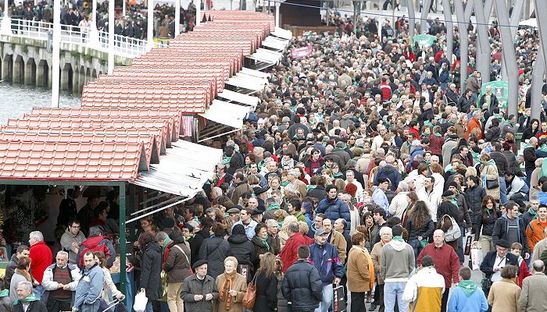

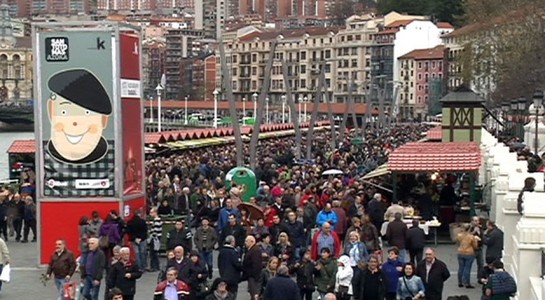

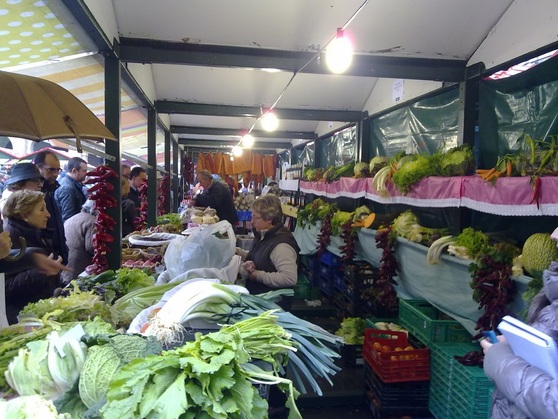


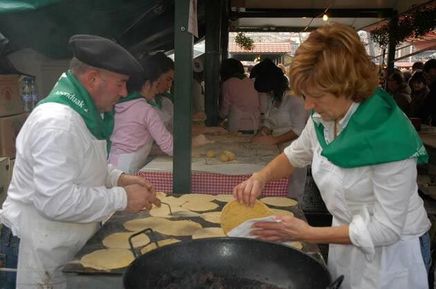








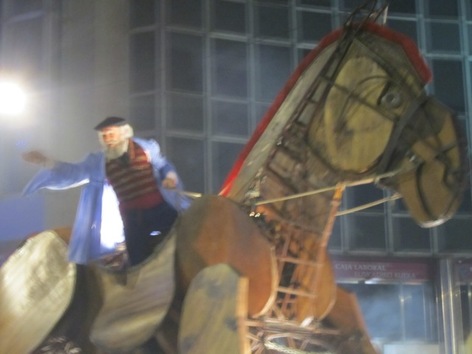

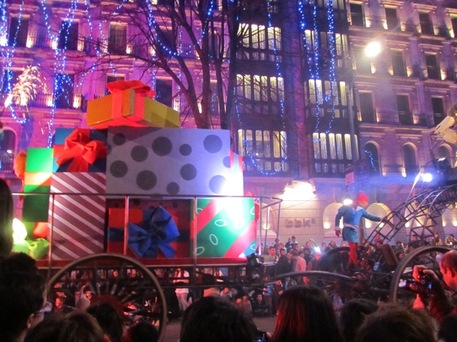




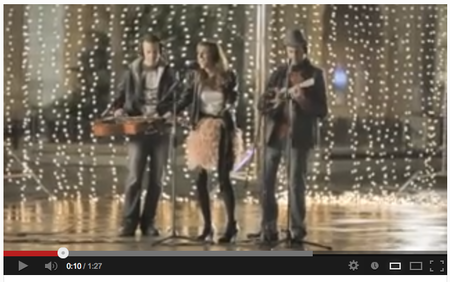







 RSS Feed
RSS Feed